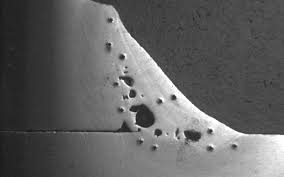Understanding Porosity in Welding: Checking Out Causes, Impacts, and Avoidance Methods
As specialists in the welding industry are well conscious, understanding the reasons, results, and avoidance strategies related to porosity is essential for attaining durable and trusted welds. By delving right into the root causes of porosity, analyzing its harmful impacts on weld top quality, and discovering effective avoidance strategies, welders can enhance their understanding and skills to generate high-quality welds constantly.
Usual Causes of Porosity
Porosity in welding is mostly brought on by a mix of elements such as contamination, incorrect securing, and poor gas protection during the welding procedure. Contamination, in the type of dust, oil, or corrosion on the welding surface area, develops gas pockets when heated up, bring about porosity in the weld. Inappropriate shielding occurs when the shielding gas, generally made use of in processes like MIG and TIG welding, is unable to totally protect the molten weld pool from responding with the surrounding air, causing gas entrapment and succeeding porosity. In addition, poor gas protection, commonly because of wrong flow prices or nozzle positioning, can leave components of the weld unguarded, allowing porosity to develop. These factors jointly add to the development of gaps within the weld, deteriorating its honesty and potentially creating structural concerns. Understanding and attending to these typical causes are essential actions in stopping porosity and guaranteeing the high quality and toughness of welded joints.
Results on Weld Quality
The existence of porosity in a weld can significantly compromise the total high quality and honesty of the welded joint. Porosity within a weld develops spaces or dental caries that compromise the structure, making it a lot more prone to cracking, deterioration, and mechanical failing. These spaces serve as anxiety concentrators, minimizing the load-bearing capacity of the weld and enhancing the chance of premature failing under used stress and anxiety. In addition, porosity can also work as potential sites for hydrogen entrapment, further intensifying the destruction of the weld's mechanical properties.
In addition, porosity can prevent the performance of non-destructive screening (NDT) strategies, making it testing to spot various other flaws or discontinuities within the weld. This can bring about considerable security problems, specifically in essential applications where the architectural honesty of the bonded elements is paramount.

Prevention Techniques Overview
Provided the harmful impact of porosity on weld top quality, effective prevention techniques are essential to maintaining the architectural honesty of bonded joints. One of the primary avoidance strategies is detailed cleansing of the base products prior to welding. Pollutants such as oil, grease, corrosion, and dampness can contribute to porosity, so making certain a clean job surface is crucial. Appropriate storage of welding consumables in dry problems is likewise important to protect against moisture absorption, which can cause gas entrapment throughout welding. In addition, selecting the proper welding criteria, such as voltage, existing, and travel speed, can aid decrease the risk of porosity formation. Guaranteeing sufficient protecting gas circulation and coverage Our site is an additional critical prevention strategy, as not enough gas protection can cause climatic contamination and porosity. Ultimately, proper welder training and accreditation are important for carrying out precautionary measures efficiently and constantly. By incorporating these prevention techniques into welding practices, the event of porosity can be substantially decreased, bring about more powerful and extra trusted welded joints.
Importance of Correct Shielding
Correct shielding in welding plays a crucial function in protecting against climatic contamination and guaranteeing the honesty of bonded joints. Protecting gases, such as argon, helium, or a combination of both, are frequently used to shield the weld pool from responding with components airborne like oxygen and nitrogen. When these reactive aspects enter contact with the warm weld pool, they can trigger porosity, bring about weak welds with reduced mechanical properties.

Poor securing can result in various issues like porosity, spatter, and oxidation, jeopardizing the architectural integrity of the welded joint. Adhering to correct shielding practices is vital to create top notch welds with marginal problems and guarantee the durability and dependability of the bonded parts.
Surveillance and Control Methods
Exactly how can welders properly check and regulate the welding process to make certain optimum results and stop flaws like porosity? One trick technique is via making use of sophisticated surveillance innovations. These can consist of real-time monitoring systems that supply comments on criteria such as voltage, existing, take a trip rate, and gas circulation rates. By continually monitoring these variables, welders can recognize variances from the excellent conditions and make immediate modifications to stop porosity formation.

In click over here addition, executing appropriate training programs for welders is vital for checking and controlling the welding procedure effectively. What is Porosity. Enlightening welders on the relevance of preserving consistent specifications, such as proper gas securing and travel speed, can assist stop porosity concerns. Normal analyses and certifications can also guarantee that welders excel in monitoring and managing welding procedures
Furthermore, making use of automated welding systems can boost monitoring and control capabilities. These systems can specifically manage welding criteria, minimizing the possibility of human error and making certain regular weld quality. By combining advanced tracking modern technologies, training programs, and automated systems, welders can successfully check and manage the welding procedure to reduce porosity defects and attain top quality welds.
Conclusion
